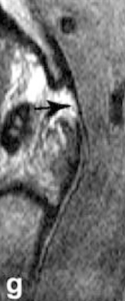Trauma vs. Degeneration
One issue we often face in representing trauma victims is the defense argument our client’s condition was “preexisting” or the result of “degeneration,” and not due to trauma caused by someone else. The definition of degeneration is “deterioration of a tissue or an organ in which it is vitality is diminished or its structure impaired.” That definition says nothing about trauma versus the normal aging process.
However, the defense often argues degeneration is a natural result of the aging process and can be accompanied with or without pain. In reality, degeneration follows both normal aging and traumatic injury. The difference is degeneration occurs at an accelerated rate following a traumatic injury — at up to 6 times the normal rate.
Because degeneration does occur at a lesser rate naturally, it is often a target of the defense. The argument often goes like this: “Mr. X wasn’t injured in this incident — if he’s not faking, then the only reason he hurts is because he’s getting old, just like my grandmother.” That is, the defense often argues degeneration is the cause of imaging findings and any pain experienced is caused by degeneration rather than trauma. This is precisely why it is so important for a patient’s symptoms to be clinically correlated to their imaging findings.
The degeneration in lieu of trauma argument is a logical fallacy, especially where the victim was asymptomatic before the traumatic event. The defense would like you to believe the victim was fragile — so fragile, in fact, they were bound to start experiencing symptoms due to degeneration at any moment. But, the argument goes, the traumatic experience couldn’t have been the cause — the fact that symptoms started was mere coincidence. This “reverse kryptonite” argument has been exposed as a fatally flawed statistical argument. In fact, the likelihood injury symptoms from a low impact collision are caused by degeneration, rather than a concurrent traumatic event, are 7300 to 1. Statistically, that is less than .01%. The reason people are hurt in these type of collisions are explained here.
Furthermore, from a statistical standpoint, preexisting degenerative changes make a person much more likely to be hurt due to trauma. This is common sense: if a body part is already weakened, then trauma to the body part is more likely to cause injury. This is why injury victims with preexisting degeneration often have worse injuries than would ordinarily be expected.
Fortunately for injury victims everywhere, medical technology has found a way to differentiate between, on one hand, relatively normal aging and, on the other hand, injuries resulting from trauma. As one example, the peer-reviewed journal Neuroradiology published several articles in the early 2000’s in which researchers gave the patients 2–9 years to heal following a traumatic event, took MRIs of the patients, and compared them with MRIs taken of an uninjured control group. The researchers looked to whether the MRI showed a ligament tear as measured by the signal intensity of the ligaments in question; as shown in the figure at right, this ligament (shown by the dark black line) has been disrupted through more than 2/3 of its width, which is classified as a Grade 3 tear. The researchers concluded alar ligaments and the tectorial and posterior atlanto-occipital membranes (3 types of neck ligaments) are only significantly injured (from 1/3 torn to fully torn) in traumatic events.
However, several years later, many of the same researchers found similar findings in asymptomatic people without trauma, which cast doubt on the original findings from the early 2000’s. Insurance companies would have people believe this is proof high signal intensity in ligaments shown on MRIs is meaningless. However, it is well-known people can have abnormal imaging findings without pain. This means the image does not tell the whole story of what is going on with the patient, and is precisely why it is so important for a patient’s symptoms to be clinically correlated to their imaging findings. Be skeptical of anyone who disputes the meaning of such high signal intensity if they did not perform an examination of the patient.


